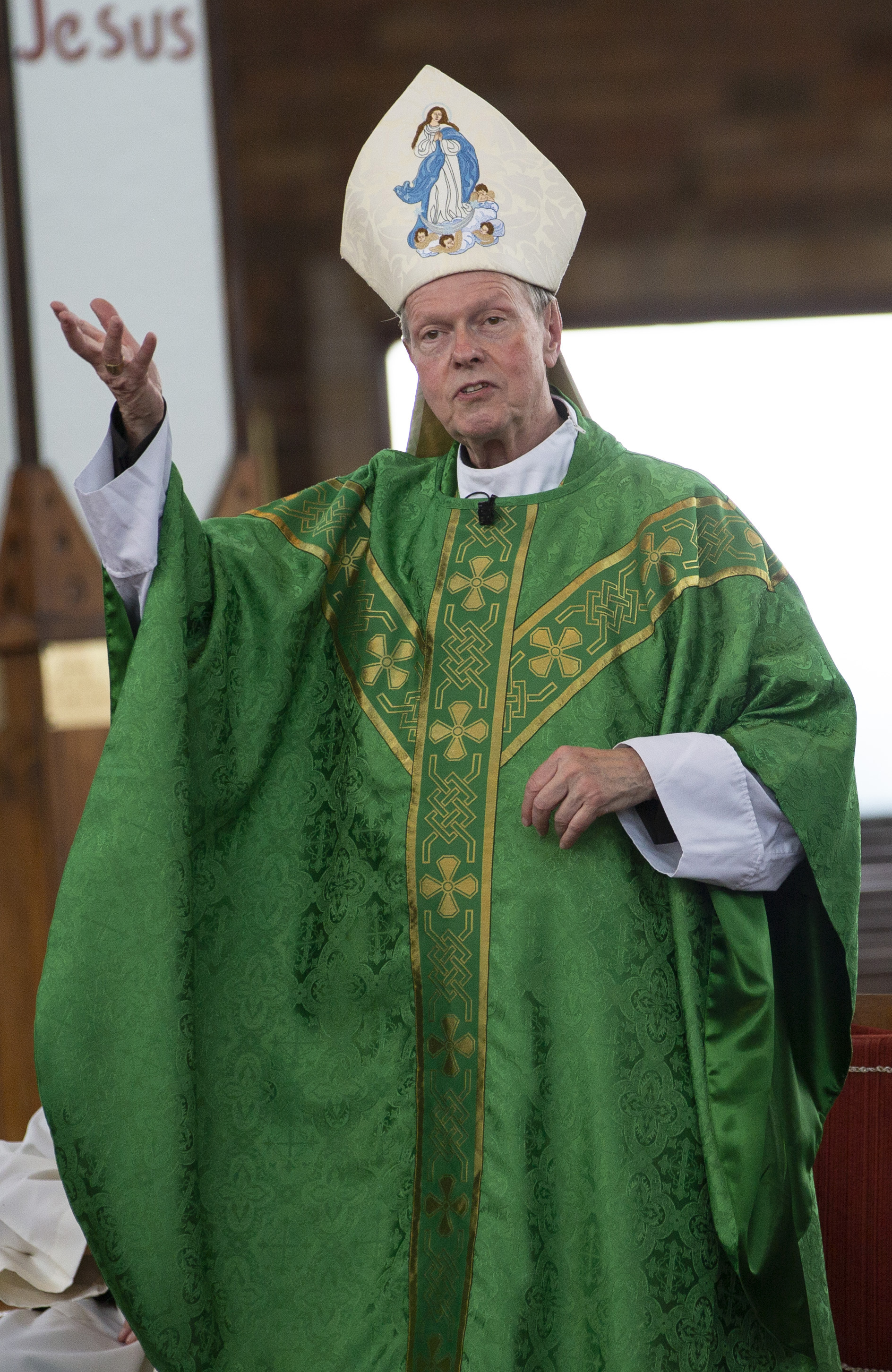April 6, 2018 at 1:53 p.m.
Catholic woman was labor pioneer
So the parishioner of St. Peter's Church in Troy organized the first long-lasting, all-female labor union when she was 19. Known as the Collar Laundry Union, it was able to secure a 25 percent wage increase and better working conditions.
For her efforts, Miss Mullaney's Troy home was recently made a National Historic Landmark and earned a visit from first lady Hillary Rodham Clinton.
For working women
Miss Mullaney founded the union in February 1864 to protest low wages and the introduction of the starching machine. The machine was scalding hot to handle and cut the prices for starching in half, which jeopardized the income of the starchers. The union, originally made up of 200 women, eventually grew to 500 members.According to "Working Women of the Collar City: Gender, Class and Community in Troy, New York, from 1864-1886," by Carole Turbin (University of Illinois Press), "Catholicism played a complex and significant role in the consciousness and labor activism of Irish working class women and men."
Dr. Turbin states that the clergy did not approve of labor organizations during the labor struggles of the 1860s through 1880s. However the Catholic view of unionism did not deter Irish working class women from labor activism. Rather, they viewed their activities in the union as separate from their religious beliefs.
Religion's role
One of the reasons the collar laundresses of Troy were able to unionize was because of their ethnic heritage in which Catholicism played a role.According to Dr. Turbin, collar workers lived in a few working class neighborhoods. Jobs were secured through ethnic networks. While the women who sewed the collars were predominately Protestant, the collar laundresses were Irish Catholics.
These Catholic immigrants had experienced class antagonism in their homeland, states Dr. Turbin, and still held those beliefs when they came to America. The women identified more with the working class males of their culture than with working women of other ethnic backgrounds. This gave them insight into the potential of union activity since the Irish men were successfully involved in the labor movement.
Working together
According to the application to make the Mullaney house a National Historic Site, the Collar Laundry Union succeeded where individual women could not."Before the Civil War, a week's wages could only buy a pair of shoes," the application states. "When they asked for higher wages, they were not listened to. With the union, when they struck for a 25 percent increase, the laundry owners gave the laundresses what they wanted in less than a week after they left their shops."
Work in the collar laundries was complicated. Rather than simply throwing the collars in a washing machine and then a dryer, like today, the newly manufactured collars went through an 11-step washing process. The collars had to be washed, bleached, washed again, boiled, rubbed and rinsed, blued, rolled, starched, dried and ironed.
Recognition
The success of the Collar Laundry Union led to Miss Mullaney's appointment as the assistant secretary of the National Labor Union. NLU president William H. Sylvis said of her at the National Labor Union Congress in 1868: "We now have a recognized officer from the female side of the house -- one of the smartest and most energetic women in America; and from the great work which she has already done, I think it not unlikely that we may in the future have delegates representing 300,000 working women."The Collar Laundry Union held three successful strikes in 1864, 1868 and 1869. A fourth in 1869 was unsuccessful. According to the National Historic Site application, that strike for higher wages was unsuccessful because the collar manufacturers united with the laundry owners to kill the union.
The collar makers refused to send collars and cuffs to any laundry that employed union ironers. In exchange, the manufacturers helped the laundry owners find and train a non-union workforce. The strike ended when the laundresses, with the exception of the union leaders, went back to work without the wage increase.
The union leaders then started a cooperative collar and cuff factory, which lasted until 1870 or possibly 1872.
Who was she?
Miss Mullaney worked to support her family, which consisted of her widowed mother, an older sister, and possibly two younger sisters and a brother.Census data state that there were three younger children living in the house that were siblings of Miss Mullaney. However, these children are not mentioned in her will and are not part of the family burial plot. It is possible they were cousins or boarders that were mistaken for family members by census takers.
Miss Mullaney eventually married John Fogarty. She died in 1906 and is buried in St. Peter's Cemetery.
(09-03-98) [[In-content Ad]]
- Federal judge rules Maine abortion clinic network can lose Medicaid funding
- Catholic scholar recalls ministry, impact of late founder of Focus on the Family
- Catholic singer’s Marian journey through psalms brought award-winning song, joy after infertility
- Trump says his administration will pursue capital punishment for all murders in DC
- Legends, wars, scars and saints: the enduring journey of Our Lady of Częstochowa
- Vatican ‘appalled’ by situation in Gaza, cardinal says
- Pope’s first World Peace Day message draws from his first public greeting
- Catholic leaders demand end to ‘barbarism in plain sight’ in Gaza
- Eucharist and charity: The traits that unite Pope Leo’s first saints
- Deepfake claims emerge as Cameroonian bishop faces viral misconduct video







Comments:
You must login to comment.